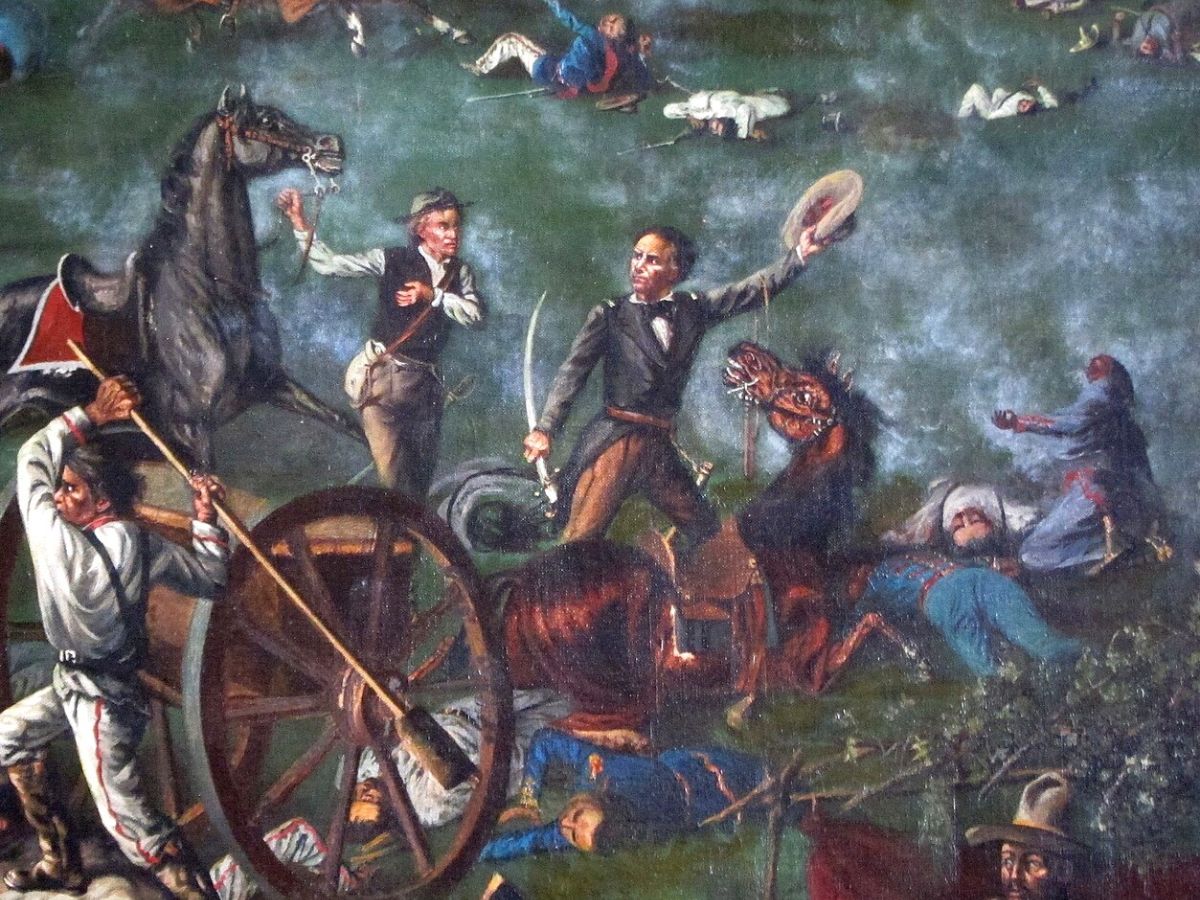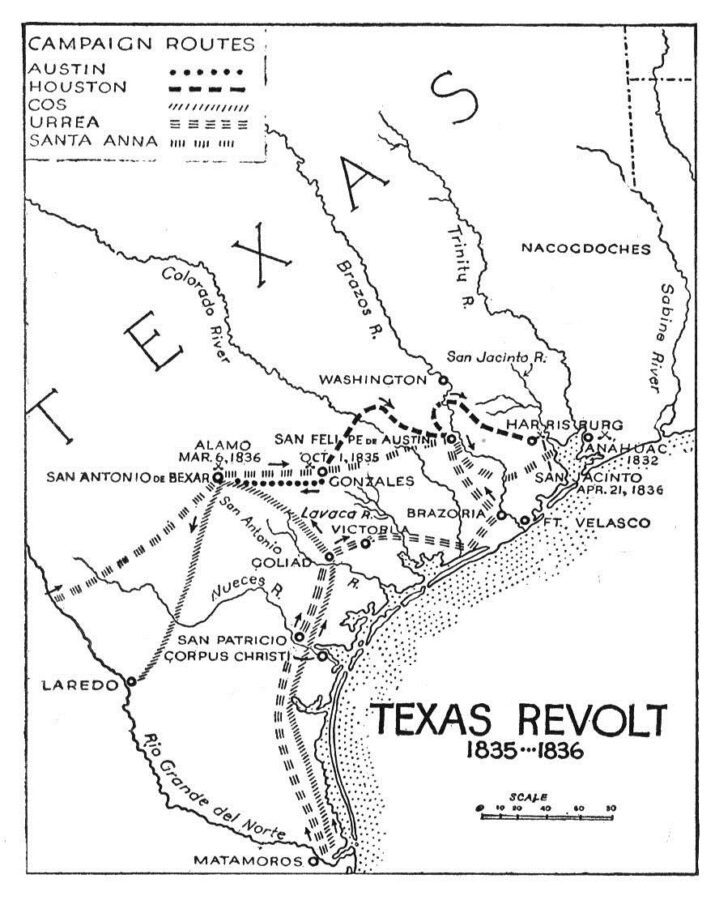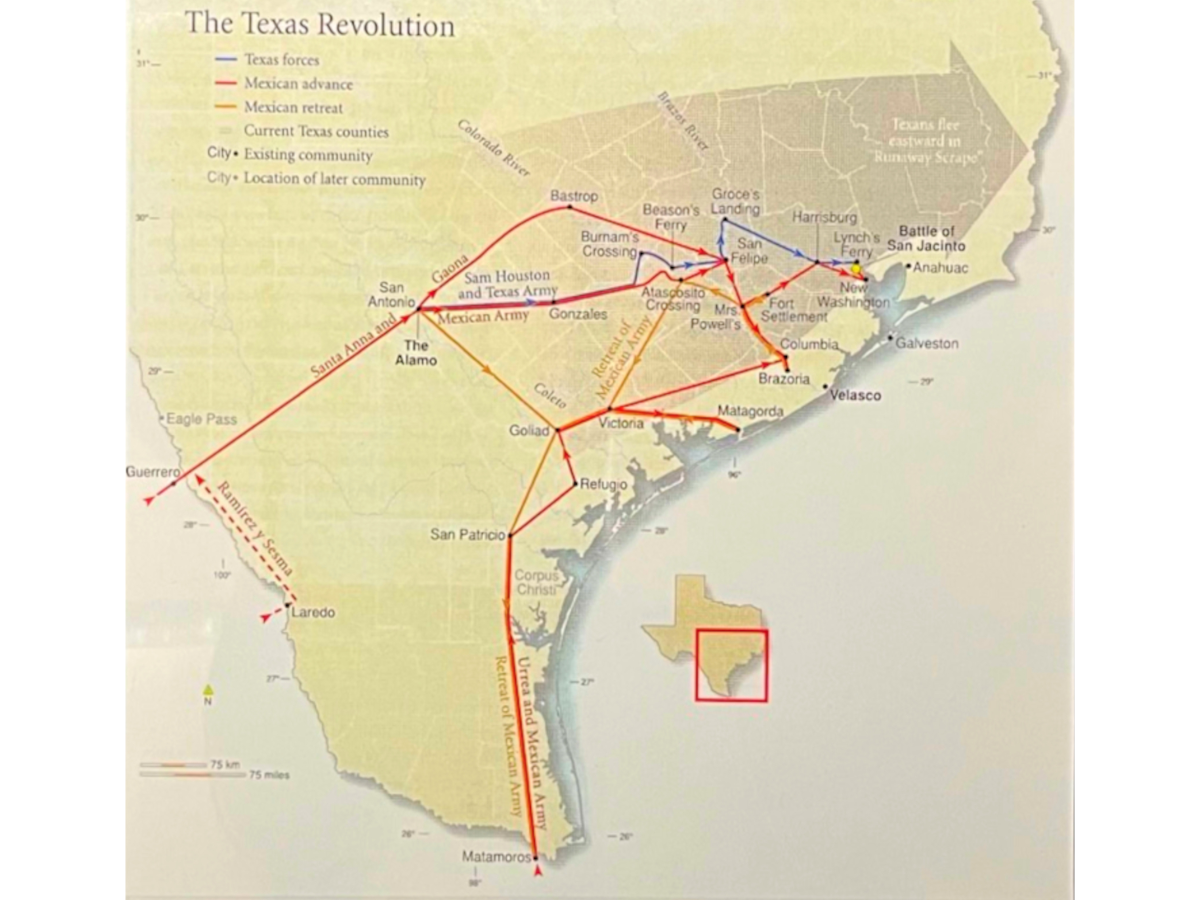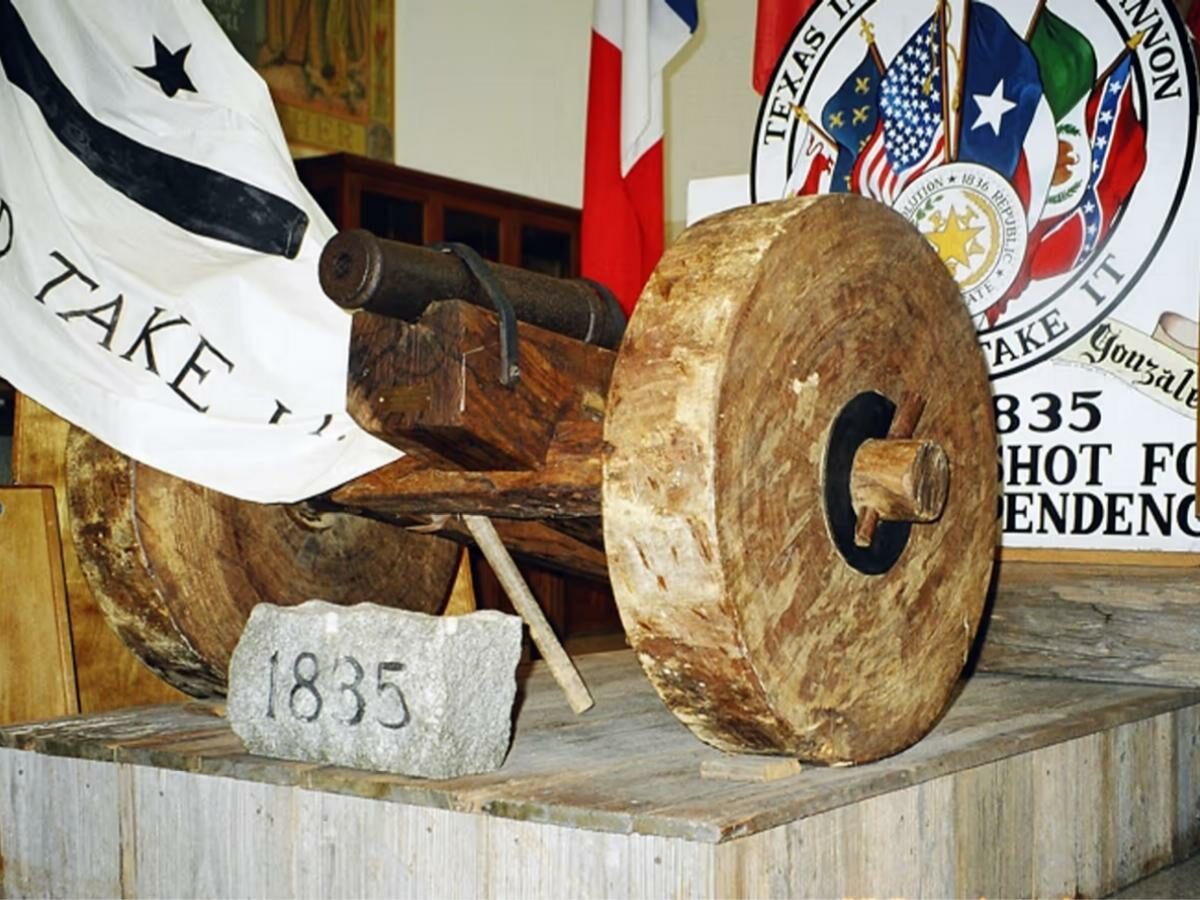Share the post "The Texas Revolution: Battle for Freedom"
The Texas Revolution was a pivotal event in the history of Texas, as it eventually led to the formation of an independent Republic of Texas. A number of events, such as cultural misunderstandings and political differences between the Mexican government and Texas colonists, led to the revolution, which raged between October 1835 and April 1836.
The revolution comprised several significant battles and turning points, shaping the future of both Texas and the United States. Throughout the revolution, key figures played an important role in the struggle for independence. As Texas colonists sought to establish their own government, they declared their independence from Mexico and began forming a new political system.
The effects of the Texas Revolution were far-reaching, impacting not only Texas and Mexico but also the United States, as it set the stage for the eventual annexation of Texas into the Union.
Key Takeaways
- The Texas Revolution led to the establishment of the independent Republic of Texas.
- Battles and key figures played crucial roles in the struggle for Texan independence.
- The effects of the revolution extended beyond Texas, impacting the United States as well.

Prelude to Revolution
You might be curious about the events leading up to the Texas Revolution. It’s important to understand the context in which this historic event took place. Initially, many Anglo-American colonists in Texas planned to become good Mexican citizens, as per the Mexican Constitution of 1824. However, political turmoil in Mexico led them to question Mexico’s ability to uphold a representative government.
During this time, Antonio López de Santa Anna, a Mexican general and politician, came into power. Although he initially supported the Mexican Constitution, he later declared himself a dictator and shifted his allegiance toward a centralist government, opposing the Federalist ideals.
Under Santa Anna’s rule, tensions started to grow between Mexican authorities and the colonists, particularly American settlers who valued a more Federalist government structure. As relationships became strained, smaller military clashes preceded the larger battles of the Texas Revolution.
One notable prelude to the revolution was the Battle of Velasco in 1832, which many historians consider the first conflict between Texas and Mexico. In this battle, Texans Henry Smith and John Austin acquired a cannon to use against the Mexican forces at Anahuac.
As you can see, the events leading up to the Texas Revolution were complex and influenced by various political and cultural factors. Keep in mind that this brief overview only touches on the surface of the intricate history behind the revolution.

Key Initiating Events
Gonzales
In October 1835, the first shots of the Texas Revolution were fired in what is known as the Battle of Gonzales. Mexican soldiers were sent to retrieve a small cannon that had been given to the town of Gonzales for protection against Native American attacks. However, the townspeople of Gonzales were unwilling to surrender the cannon, seeing it as a symbol of their resistance against the Mexican government.
To prevent the Mexican soldiers from taking the cannon, local Texan militiamen decided to fight. They crafted a flag depicting a cannon and the words “Come and Take It,” which quickly became a rallying cry. Despite being vastly outnumbered, the Texan forces managed to push back the Mexican soldiers and retain possession of the cannon. The Battle of Gonzales marked the beginning of the Texas Revolution and served as a starting point for the uprising against Mexican rule.
San Antonio
Following the success at Gonzales, Texas revolutionaries set their sights on San Antonio, a strategic location controlled by Mexican General Martin Perfecto de Cos. A series of battles and skirmishes took place between October and December 1835, culminating in the Siege of Béxar.
Edward Burleson and James Bowie’s Texan forces managed to surround San Antonio during the siege, forcing General Cos and his Mexican soldiers into a defensive position. As you can imagine, tensions were high, and neither side was willing to give in. After weeks of fighting, the Texas forces emerged victorious, ultimately capturing General Cos and many of his men. This victory further fueled the desire for independence among Texans and bolstered their determination to break free from Mexican rule.
Throughout these early stages of the Texas Revolution, key events like the Battle of Gonzales and the Siege of San Antonio laid the groundwork for the larger conflict to come. The struggle between the revolutionaries and Santa Anna’s forces, motivated by a desire for freedom, eventually resulted in the establishment of the Republic of Texas.

Battles and Turning Points
The Alamo and Goliad
During the Texas Revolution, the Battle of the Alamo stands out as one of the most pivotal events. Early in 1836, you would have seen valiant defenders like William Travis and James Bowie leading a group of about 200 men against a much larger Mexican Army under General Santa Anna. Although your heroes fought valiantly, they ultimately succumbed to the overwhelming force of the Mexican troops. The Battle of the Alamo has since been remembered as a symbol of courage and resistance.
Not long after the Battle of the Alamo, the tragic Goliad Massacre occurred. In this horrific event, more than 300 Texan soldiers, who had surrendered to the Mexican Army, were executed on Santa Anna’s orders. These two events—the Alamo and Goliad—played significant roles in fueling the desire for independence and freedom among Texans.
San Jacinto
In response to the Alamo and Goliad, the Texan forces, led by General Sam Houston, regrouped and prepared for the decisive Battle of San Jacinto. This confrontation marked a turning point in the Texas Revolution, as the Texans sought to avenge their fallen comrades.
During the battle, your valiant soldiers surprised the Mexican troops with a swift attack, yelling, “Remember the Alamo! Remember Goliad!” Within just 18 minutes, the Texans had defeated Santa Anna’s forces, capturing the Mexican general in the process. This victory tremendously shifted the momentum in favor of the Texans, ultimately leading to the end of the revolution and the establishment of the Republic of Texas.
Throughout these key battles and turning points, you can see how the enduring spirit of the Texan people and their relentless pursuit of freedom shaped the course of the Texas Revolution.
Role of Key Figures
During the Texas Revolution, you’ll come across several key figures who played crucial roles in shaping the events that transpired. Let’s explore some notable characters. Stephen F. Austin, known as the Empresario, had an influential role in the revolution. He brought American settlers to Texas and worked alongside Sam Houston.
Houston, a military leader, achieved a significant victory in the decisive Battle of San Jacinto, leading to the capture of General Antonio López de Santa Anna, who was a central character in the conflict. Santa Anna was the President of Mexico and commanded his forces as they tried to stop the rebellion in Texas.
Unfortunately for him, his capture at the Battle of Jacinto marked a turning point in the conflict. Another important figure of the time was Moses Austin, who originally initiated the plan for colonization in Texas. His efforts paved the way for his son, Stephen F. Austin, to further develop the region.
Davy Crockett may have not held a significant political role during the Texas Revolution, but his bravery and tenacity in fighting for Texas as part of the volunteers at the Alamo boosted morale. James Fannin and Edward Burleson were also important military leaders during the revolution. On the Mexican side, General Vicente Filisola tried to recover Texas for Mexico, leading the forces after Santa Anna’s capture.
It’s interesting to note that Ben Milam, another significant figure, played a crucial role in the success of the Texas independence movement. Milam was involved in the Siege of Bexar and helped capture the Mexican garrison in San Antonio. This victory was pivotal in establishing Texan control over the city and boosted their morale.
By learning about these key players, you’ll gain insight into their contributions and how their actions shaped the course of the Texas Revolution.

Declaration of Independence and Formation of a New Government
During the Texas Revolution, you might know that a significant event took place, which was the issuance of the Texas Declaration of Independence in March 1836. This declaration marked the separation of Texas from Mexico and led to the formation of a new government.
The Republic of Texas
As you delve into the history of the Texas Revolution, you’ll learn about the establishment of the Republic of Texas. On March 2, 1836, the Texans and Tejanos that made up the convention at Washington-on-the-Brazos approved the Texas Declaration of Independence, and with it, a new nation was born.
Following the declaration’s approval, a Provisional Government was formed for the newly independent Republic of Texas. This temporary leadership was put in place before an elected President could assume office. The people involved in the government, such as the Texians and Tejanos, played a crucial role in shaping the government of the emerging Republic.
As you explore the history of the Republic of Texas, remember its importance in the Texas Revolution, which eventually led to their independence and the formation of a new government. Through the bravery and determination of the Texians and Tejanos, Texas emerged as a free and independent nation.
Effects on the United States
You might be curious about the impact of the Texas Revolution on the United States. After the Revolution, Texas gained its independence from Mexico and formed the Republic of Texas. Despite their previous treaty with Mexico, Texas pursued annexation to the United States.
The annexation of Texas served to expand the territory of the United States, ultimately allowing them to gain more land and extend their influence. As a result, the southern United States got the opportunity to grow in political power, with Texas eventually becoming a crucial state for the US economy.
However, the addition of Texas as a new state brought tensions between the North and South states, mainly centered on the issue of slavery. This division would later play a significant role in the lead-up to the American Civil War.
In 1846, the tensions between Mexico and the United States escalated, leading to the Mexican-American War. The conflict resulted in the United States acquiring a large portion of the present-day Southwestern United States, including California, Nevada, Arizona, Utah, and parts of New Mexico, Colorado, Kansas, Oklahoma, and Wyoming.
As you can see, the Texas Revolution had significant consequences for the United States. It led to the growth of the Southern states and played a role in the events leading up to the Civil War. Additionally, it helped set the stage for the Mexican-American War, which further expanded the United States territory.

Post Revolution Texas
After the Texas Revolution, you would find yourself in the newly formed Independent Republic of Texas. Life in post-Revolution Texas presented a unique set of challenges and opportunities for various groups, like children, women, and civilians.
As a part of this new republic, there were various issues related to land ownership. The government gave land grants to many settlers who arrived in independent Texas. This was done to encourage settlement, which benefited both the settlers and the young republic by securing its borders.
During this time, women played a vital role in the reconstruction of the society. They contributed significantly to the local economy by engaging in agricultural and business activities. Besides, women were instrumental in raising and educating children. At the same time, education became a priority, and various schools were established for the children.
Civilians also experienced a transformation as they adjusted to the new post-revolution environment. New towns emerged, and existing ones grew in size, creating opportunities for trade and businesses. People worked to build communities, foster social bonds, and establish local governments.
However, despite the triumph of the Texas Revolution, the Independent Republic of Texas still faced issues, such as the legality of slavery. Although the Mexican Congress abolished slavery in 1829, it continued in Texas even after the revolution. This situation remained a point of contention with Mexico, which did not recognize the new republic and considered Texas as a breakaway state.
The post-Revolution period in Texas was an era of significant changes and developments. The people living in the Independent Republic of Texas worked together to build their homes, communities, and economies as they faced various challenges, including border disputes and the issue of slavery. With determination and perseverance, they managed to establish a foundation that would eventually lead to the annexation of Texas into the United States in 1845.
Share the post "The Texas Revolution: Battle for Freedom"
Christian Linden is a seasoned writer and contributor at Texas View, specializing in topics that resonate with the Texan community. With over a decade of experience in journalism, Christian brings a wealth of knowledge in local politics, culture, and lifestyle. He holds a Bachelor's degree in Communications from the University of Texas. When he's not writing, Christian enjoys spending weekends traveling across Texas with his family, exploring everything from bustling cities to serene landscapes.











